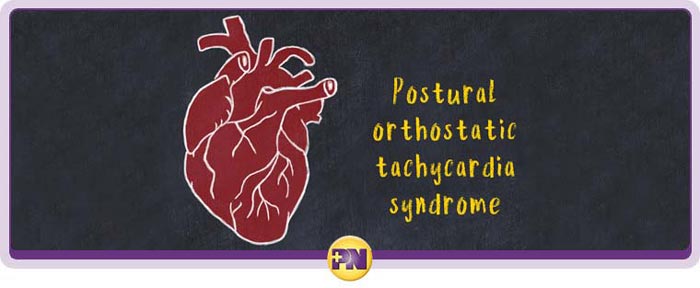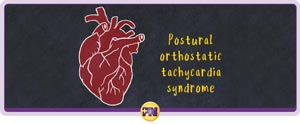POTS Specialist in Rockville MD
POTS affects the signals in the body between the brain and heart when a person changes position. POTS can also cause a person to feel breathless, lightheaded, nauseous, dizzy, and anxious, and experience headaches and blurred eyesight when they switch positions. Talk to our team of healthcare professionals at Physicians Now Urgent Care and Walk-In Clinic today about POTS syndrome and the treatment options available. For more information, contact us for more information! We are conveniently located at 15215 Shady Grove Road, Suite 100, Rockville, MD 20850.




Table of Contents:
What is POTS syndrome?
What are the signs of POTS?
Who can diagnose POTS syndrome?
What treatment is available for POTS syndrome?
POTS syndrome, or postural orthostatic tachycardia syndrome, is used to describe several neurological conditions that all have very similar symptoms. POTS symptoms generally show up when a person stands up and can cause them to feel faint or dizzy or have heart palpitations upon being upright. It isn’t always clear what the cause of POTS is because each person who has it can’t trace it back to one single root cause. Some research and evidence have linked it back to certain genes and also that it could be related to autoimmune issues. Additionally, POTS symptoms have been linked to being triggered by some life events such as pregnancy, puberty, major surgery, traumatic blood loss, viral illness, and monthly menstruation. While POTS can affect anyone in any age group, the majority of diagnosed cases occur in women between the ages of 15 and 50.
POTS affects the signals in the body between the brain and heart when a person changes position. For most people, the ability to change from standing to sitting or laying down is done smoothly without any issues. The autonomic nervous system controls how the body reacts to the change in gravity from one position to the next by managing balance and blood flow. For the average person, there will be adjustments made to their heart rate and blood pressure from one position to another, such as having a higher heart rate when standing than when sitting. However, in a person with POTS, the heart rate can escalate at a significantly higher level than normal, making them feel the need to lie or sit back down. POTS can also cause a person to feel breathless, lightheaded, nauseous, dizzy, and anxious, and experience headaches and blurred eyesight when they switch positions. The lower legs and feet can appear swollen and purple as well due to blood pooling in this area upon standing.
Your family doctor or primary care physician can help you if you have POTS symptoms. They will ask you a series of detailed questions to understand what your daily activities are, how long you have been experiencing symptoms, and how much you are affected by the symptoms you are experiencing. You will need to let your doctor know about any medications you are currently taking, as some medications can cause symptoms similar to POTS because they interfere with your blood pressure and autonomic nervous system. Your doctor will ask you to move through a variety of positions and take note of your blood pressure and pulse with each position change, as well as note any symptoms that you experience when you change position. They may also recommend that you go through a tilt table test which involves moving through different positions and angles while being fastened to a table and having your vital signs monitored. Your doctor may also refer you to a neurologist, cardiologist, or another specialist that is focused on the internal connection between the heart and brain for further evaluation.
There are several treatment options available for POTS, with options being unique to the individual patient. Medication can be prescribed to help relieve symptoms such as fludrocortisone, midodrine, beta-blockers, or SSRIs. Your doctor may also suggest some small changes to your diet that can help relieve symptoms by increasing your blood volume, like drinking more water and increasing your sodium intake within a reasonable amount. Patients will also need to ensure they are getting enough quality sleep on a regular basis and get some aerobic exercise. Keeping a journal of your symptoms will help you to identify what is triggering your symptoms. Once you know what is triggering your symptoms, you and your doctor can work on a treatment plan to relieve the symptoms or decrease their severity.
Come to Physicians Now Urgent Care and Walk-In Clinic today, our medical professionals are experienced and can help you recover quicker. Call us today to book an appointment. We look forward to serving you! We serve patients from Rockville MD, Travilah MD, Lone Oak MD, Colesville Park MD, Redland MD, Darnestown MD, Anscroft MD, and Wheaton-Glenmont MD.

Additional Services You May Need
▸Illness
▸Injuries
▸Acute Care
▸Asthma
▸Head Injury
▸Cholesterol Management
▸Diabetes
▸Flu Shot
▸Heart Disease
▸RSV Testing

Additional Services You May Need
▸Illness
▸Injuries
▸Acute Care
▸Asthma
▸Head Injury
▸Cholesterol Management
▸Diabetes
▸Flu Shot
▸Heart Disease
▸RSV Testing





